#bio behavioral
Explore tagged Tumblr posts
Text
Human Message - A soundtrack The six bio-behavioral characteristics of humanity in music. From "Human Message", my sub-project in A Sign in Space Community
#3: Use of tools for body augmentation (the path leading to technology and machine)
Key References:
Wiener, N. (1948). Cybernetics: Or Control and Communication in the Animal and the Machine.
Ingold, T. (2000). The Perception of the Environment: Essays on Livelihood, Dwelling, and Skill.
Clark, A. (2003). Natural-Born Cyborgs: Minds, Technologies, and the Future of Human Intelligence.
Iriki, A., Tanaka, M., & Iwamura, Y. (1996). "Coding of modified body schema during tool use by macaque postcentral neurons." Nature Neuroscience.
Wade, N. (2009). The Human Spark: The Science of Human Development.
youtube
#human message#the human message#cybernetics#A sign in space#luna#bio behavioral#tools#human augmentation#arcade fire#black mirror#machine#technology#Youtube
0 notes
Text
Hot take
Night furies are actually perfectly evolved for hunting and killing other dragons and the only reason they aren't a dragon-hunting species like the death song or deathgrippers are is because DreamWorks couldn't have their adorable main character dragon be a "cannibal"
(below I'm gonna try to summarize what we've figured out in a convo with friends on discord)
(also tw animal death via predator)
First of all yes I'm aware that pretty much every decision made about their design was with consideration of the effect it would make on human audiences but hear me out
Night furies are most iconically known as dive-bombers. They are built for speed, high maneuverability, night-time camouflage and for striking targets from above. If we remove human settlements out of the equation (which would not have existed long enough to actually influence night fury evolution, come on), what does that leave us with?
They aren't built for catching fish for sure, they aren't very hydrodynamic and their head is round, wide, and their teeth are dull. Honestly, the monstrous nightmare is much better suited for catching fish, with its long neck, almost pelican-like jaw and rhamphorhynchus teeth

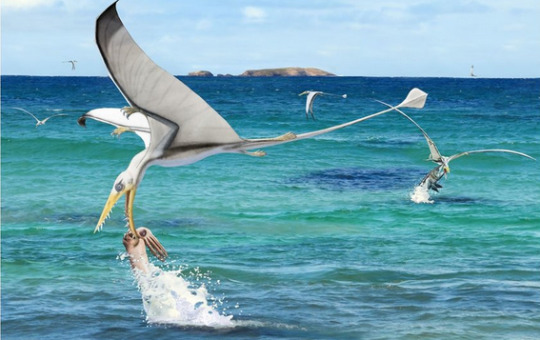
Compare to

Yeah the jaws look kinda like a porpoise of some sort but for that the whole body would have to be a lot more aquatic imo. The light fury looks a lot closer to an aquatic diver, it has a sleeker body, rounded fins instead of spikes, and a long neck.
I don't really see them hunting land animals either, they just don't look like they're adapted for that minus the resemblance with large felines and even then, they're too large to effectively hunt in forests.
The one thing I can kinda imagine them hunting is large mainland megafauna, but we're working with a setting that takes place pretty much exclusively on islands. And overall, dragons are the only abundant species there with the exception of fish and human-bred sheep and chickens.
In general, night furies have duller teeth, smaller claws and are smaller than most dragons. Disregarding the movies making Toothless weirdly OP, a night fury would be disadvantaged against most dragons in a 1v1 fight and besides, it has four huge weak spots that would highly discourage it from a direct physical fight - the primary and secondary tail fins. One unlucky rip in the membrane and the night fury is fucked.
The night fury however noticeably resembles falcons, given their dive-bombing ability and high maneuverability.
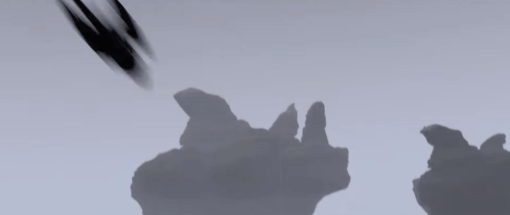

Falcons too have smaller beaks and weaker claws compared to most birds of prey, and for that they compensate by simply picking up speed, balling up their talons and Punching. Really. Hard.
And they use that ability to kill other birds, even much larger ones, by knocking them right from the sky.
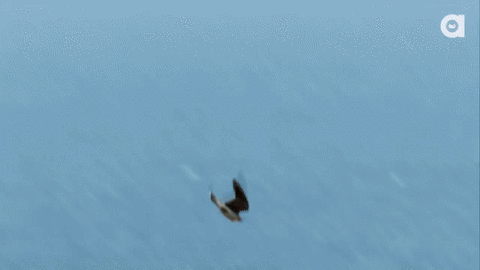
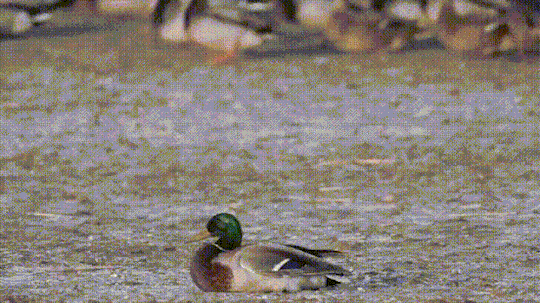
Here, the night fury's plasma blast works the same way as a falcon's punch. Dragons are fire-resistant, so what the plasma blast does is really just a densely packed bolt of energy that has the effect of either stunning or outright killing prey by damaging its spine. And what the plasma bolt doesn't do, rapid contact with the ground would finish. And if even that doesn't do it, the night fury's wide jaws and dull teeth are just fine for simply clamping around the unlucky dragon's neck and strangling it, like a lion or a pitbull.
The night-time camouflage allows the night fury to soar for extended periods of time perfectly unnoticed in the night sky, and by the time it strikes, the dragon wouldn't even know what's coming.
Unless
Say the hunting night fury is aware of other dragons sleeping under the trees, as most dragons probably would at night (village raids aside, most dragons seem to be diurnal), so how does the night fury get them in position where it can use its signature attack? Well, there's That Iconic Screech Of Death. Since in the movies it tends to appear not just during dive-bombings but also when charging up a blast, I imagine it's something the night fury is able to control to some degree. So by simply fake-diving in close proximity to sleeping dragons, it can effectively terrify them into leaving their hideout and fly out into the open where it can easily take them out.
I dunno, the possibility of night furies as predators to other dragons just makes so much sense to me, I really don't know what other reasons there would be for them to evolve these particular adaptations.
And one more little headcanon to add to this whole rant - since night furies are significantly smaller and less equipped for dragon vs dragon fights and are primarily speed-based predators, I imagine there is this very likely scenario:
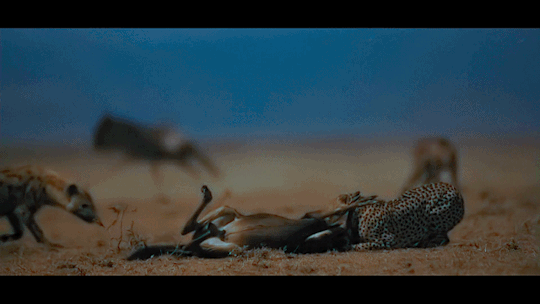
There is one dragon who resembles a hyena, a lil bit

Ok, rant over
#httyd#how to train your dragon#night fury#spec bio#spec evo#as for why Toothless isn't hunting other dragons and lives in the hive with all the rest#this is a pretty funny possibility to think about but perhaps in the past -1000-ish years humans have simply become#such a massive nuisance to the dragons that some of their species abandoned their natural behavior in exchange for kicking humans asses#yes i know the movies were all about ''dragons are actually perfectly fine and innocent and it was just the Red Death''#but also human effect on the environment and encroaching on natural dragon hunting grounds and fucking up the ecosystem#anyway there
9K notes
·
View notes
Text

A few birds of prey found in (and beyond) Imperial Wardi claimed land: the crow kite, dove eagle, and golden eagle.
---
The crow kite is a small, nimble hunter. This particular species is found exclusively west of the Blackmane mountain range and east of the Mouth seaway, though has close relatives elsewhere. They're mostly found in grasslands, where they can be seen hovering in midair while scanning for prey below. They primarily prey upon insects caught in flight, though will also regularly take rodents and lizards and can grapple with prey almost as large as themselves. Most of their diet consists of live prey, though they will opportunistically scavenge.
They are threatened by larger birds of prey, though are notably aggressive and proficient at mobbing most threats.
The crow kite has a particular partnership association with the (broadly unnoticed to be Sapient by humans) 'talking crows' who live here. Mutualistic and/or stealthily parasitic interactions with other animals characterize many crow cultures, and kites represent the only raptors that crows in this region partner with (largely due to posing no threat to themselves/their young).
Both (mostly) benefit from the overall relationship- the kite is slightly larger and notably more powerful than a single crow, while the crows are highly social and can keep more effective watch for predators as large groups. When foraging in association, they are highly effective at warning each other of threats and teaming up to drive them away. Crows will take on predators they wouldn't even dare approach as a large group with kites on their sides (notably the dove eagle, which is rarely outright mobbed by smaller birds due to their tremendous agility and capability of turning the tables on pursuers), and the two species are known to drive away substantially larger mammalian predators (occasionally even humans) from carcasses and resources. Kites also have beaks better equipped for tearing than crows, and can open some carcasses that crows cannot.
The most dramatic form of this association is the 'adoption' of kite chicks by some crow families. Kites rear clutches of 3-5 eggs, and the crows will occasionally steal an unguarded chick and raise it to maturity in order to fully monopolize the benefits of this partnership. Kite chicks adopted by crows do not heavily compete for resources (as the crows have a significantly more generalist diet) and serve as permanent attack dogs/can openers for their adoptive families while out foraging. This is not Particularly beneficial to the kite, who (having imprinted on their crow parents) will not readily mate with their own species, and will often be allowed to do most of the work of mobbing predators (when deemed too risky/too much effort for the crows themselves). An adopted kite's propensity to form one-sided pair bonds with their adoptive species is also utilized to assist in the labor of rearing chicks, where it can be coaxed into bringing kills for a nesting crow 'partner'. The crows generally do bond with their 'adoptees' (though not as fellow crows) and don't tend to perceive this relationship as wholly exploitative.
This association in of itself is widely noted by human observers, hence the kite's common name. Most peoples in this region have largely negative outlooks on crows (ranging from being despised scavengers to respected but frightful animals, and in all cases are considered potentially bad omens), which is extended to the crow kite. Crow kites are often regarded as omens of death and misfortune, sometimes even more intensely than crows. One of the most widespread beliefs (across several cultural groups) is that seeing a crow kite and crow perch together on top of a home indicates the impending demise of a mother and infant during childbirth.
---
The dove eagle is a mid-sized specialist predator of smaller birds, found widely across the temperate and subtropical eastern continental mass. It is most associated with the killing of doves (hence its name), though the majority of its prey is passerine birds and it is occasionally known to take small mammals and reptiles. It is a very powerful predator and exceptionally agile in flight. It also has notably long legs, and can occasionally be seen pursuing prey on foot. It is most abundant in savanna and wooded regions, as well as mountainous areas with high cliffs, as it usually hunts in short bursts from high perches. It can be somewhat of a pest in human settlements, where it poses a threat to poultry.
While often an irritant to people for its predation of avian livestock, it tends to be regarded for its beauty, with its bluish-hued feathers, sleek profile, and elegant flight. Its light blue-gray eyes are notably distinctive among predatory birds here. Light eye colors commonly have sinister and/or apotropaic associations among peoples south of the Viper seaway, which carries into folklore surrounding dove eagles. They are often ascribed the power to paralyze prey with their stare, to be capable of inflicting curses, and/or to be able to frighten off evil spirits with their glare. They are often left unharmed where other threats to livestock would be killed out of fear of receiving a curse.
The dove eagle has the most extensive significance in the Hill Tribes cultural sphere. This bird is one of many avian forms ancestors can take when visiting the world of the living, and the vast majority of its birdsign-omens are wholly positive. The dove eagle tends to be a signal of impending success and good luck in economic ventures, and its presence/gaze chases away bad luck and evil spirits (perhaps at the cost of some poultry here and there, which sometimes may be a message of ancestral disapproval as well as just a general bummer). Its feathers are considered lucky and utilized in magical practice (bundles are waved to banish malicious spirits from homes and objects, single feathers are sometimes worn as good luck charms), though feathers must be retrieved from around nests or by chance, as killing predatory birds is taboo.
---
The golden eagle is a very large, bulky predator. This particular subspecies (distinguishable by its dark, mostly solid colored wings) is very widespread and can be found throughout much of the northeastern hemisphere, adapting to a considerable variety of habitats and climates. It is occasionally a threat to livestock, being wholly capable of killing the tiny offspring of horses, and sometimes even a threat to newborn cattle (they are known to kill very young calves by knocking them off cliffs when the opportunity presents itself). They are noted for their dramatic courtship displays, wherein coupling pairs lock talons and spin towards the ground in freefall.
They tend to be highly regarded animals in most of this region. They tend to garner associations of regality, power and (usually masculine) strength. They are frequently used as symbols of monogamous romantic love and devotion, notably mating for life (most partnered pairs at least rear chicks together for life, though extra-pair copulation is fairly common and often goes unnoticed by observers). Their mating death-spiral makes frequent appearances in Wardi poetry as a romantic allegory, sometimes as a simple representation of foolhardy love and sometimes representative of the often challenging nature of first-time marriages (very commonly arranged, and often between strangers in the upper-class contexts that mainstream poetry tends to focus on).
Most proto-Wardi groups appear to have held the eagle as a high status sacred animal in ancient history, and very old outsider recordings of these earlier practices describe these birds as highly venerated in association with a non-personified but semi-deified sun and/or sky. Proto-Finnic groups that migrated here appear to have had associations with golden eagles in a funerary context (these migrants most likely practiced sky burials early in their history here) and to have adopted the golden eagle's semi-deified status from proto-Wardi groups they interacted with/absorbed/were absorbed by.
The centrality of the golden eagle has largely been lost in contemporary practices, but remnants of its status are still obvious. Cholemdinae folklore describes the golden eagle as one of God (who is the sun)'s most devoted creations, who tried to stop the theft of fire that would destroy the first world. Surviving 'heathen' North Wardi practices that similarly venerate the sky as a central deity describe the golden eagle as its messengers, also capable of traveling to and from the land of the dead. The King of Eagles, the first golden eagle (and first bird in general), father of dragons and the winds, is lightly venerated as a deity-spirit throughout most of the Hill Tribes religious sphere, and the spirits of dead ancestors are considered to frequently take the form of these birds. Contemporary Imperial Wardi animal-folktales also tend to cast the golden eagle as a king of birds, commanding and served by lesser flying creatures. While not outright sacred animals in the Faith of the Seven Faced God, they have noted solar associations. They are sometimes used as sacrifices to the Face Inyamache, and their feathers are given as offerings and worn by priests to this deity-aspect.
#creatures#The golden eagle is like Basically the same as the irl one but I gave them the bald eagle death spiral behavior because I needed a big#fucking bird that will do that and these guys were already establised#The other two are LITE spec bio though squarely within irl genera. (especially the kite. This is just like. a standard kite mostly)#Not totally related but I don't Think falconry is a major practice here (extant but there's no real falconry Culture)#but it's a HUGE thing in the contemporary Burri Republic especially Kosov (much of which is mountainous/part of a plateau)#This same subspecies of golden eagle is the most favored captive bird and sometimes used for fairly large game#Mostly used for smaller game though particularly for furs (the winters on the plateau are VERY cold for the subtropical latitude)#I have a wip about that I should finish it#Traditional Burri religion involves a very large pantheon and there's 2 falconry gods (one predominantly devoted to it and one as a#secondary association)
149 notes
·
View notes
Text
A random thing I devised in my head today that I just randomly feel like sharing. Probably isn't much good though, and I probably won't do anything with the idea, I just feel like telling, I guess
Basically this just stemmed from me thinking of the idea of Transformers One Orion and D-16 being unaware for a comically long time that they have a sparkling coming, mostly because the cogless bots are not given proper education on the matter given they aren't supposed to have sparklings. But also I found the idea funny
But also it's not like just straight up a normal pregnancy, there's at least a pod/egg stage, and even during that time, they are unaware
The situation I best devised in my head actually has no carrying cycle at all for them, but instead, while in the mines one day, one of them finds a really cool looking glowing metal rock, and they decide to just take it back home with them since it doesn't look like mineable Energon anyways. It's also comfortably warm to the touch, nice to cuddle
It's actually a sparkling pod, but they don't know that. Granted, assuming that this is where sparklings usually come from, you'd assume they'd be more briefed on the subject, but I don't know, maybe they don't normally appear this deep underground. And Orion probably smuggled it back because Elita likely wouldn't let him keep random cave junk, especially if it glows
So they take it back, taking turns as to who has it, and giving it a nice and comfortable little display to watch it from (its glow also seems to fluctuate based on its comfortability, but they brush it off as them not really understanding how rocks work), some miners probably joke about how it's basically their sparkling the way they treat it (they are also unaware), but they don't really care
Then the movie happens, and afterwards when Optimus comes to move his old stuff (as well as D-16's), he decides to take their glowy rock with him, as a reminder of their old life and how happy they used to be. However shortly after, the rock stops glowing entirely, something that has never happened before. Optimus doesn't really know why it happened, but it makes him sad and doesn't help the symbolic meaning, as it seems like their past has seemingly completely died out, and even his old ways can't save it like it used to
Then the next morning, he wakes up to find the rock crumbled and destroyed, but also, that a small sparkling conveniently the same size as the rock is now in his room, either exploring or sleeping right next to him. And he quickly realizes "Oh shit that was a pod. We accidentally incubated a whole child"
#I'm not sure if he would but it'd be funny if he called up Megatron to alert him on the situation#that they are now parents (I wanna say mothers)#Megatron reluctantly answers his comm only for OP to say “THE ROCK WAS NOT A ROCK” and that's it#it was not what Megs was expecting and he is very confused#honestly I could probably draw this whole scenario out and it be more cohesive#I'm just really lazy and don't wanna#but maybe I will#also I've been warming up more to the idea of non bio related kids just being the norm for Transformers#like they don't reproduce they just take in the babies created by Primus/Cybertron#I mean I still like the typical sparkling method but I also like this idea too#idk#I just thought the idea of the two unknowingly incubating a pod/egg to be funny#also potentially some of their behavior towards the rock was a subconscious awareness that it was a sparkling#like deep seated coding they aren't entirely aware they're acting on#no clue what the sparkling looks like but maybe its unusual location means it's an atypical bot type#anyways I'll stop rambling in the tags now#transformers#transformers one#dpax#megop#optimus prime#transformers sparklings#random stuff
63 notes
·
View notes
Text
when gitae made this face, it was an instant reminder of samuel’s Insane faces
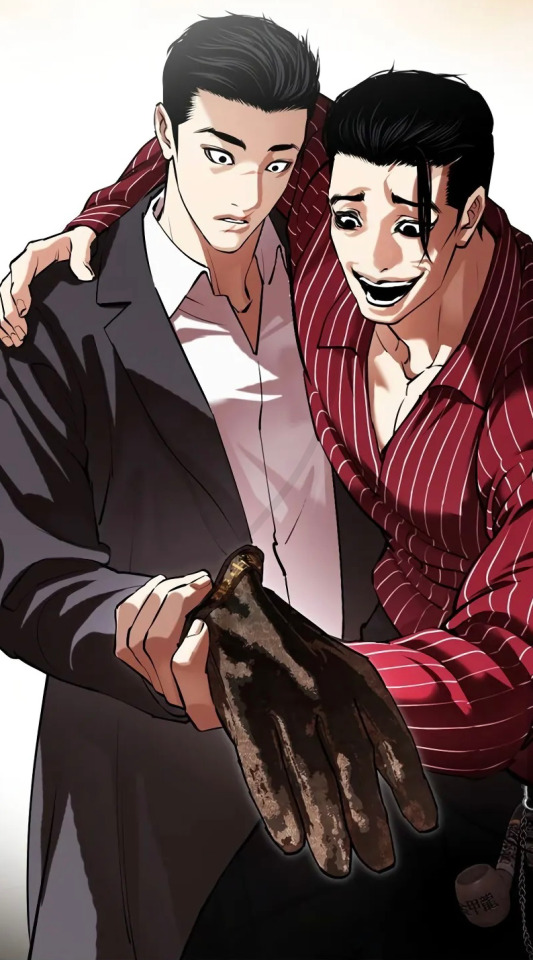

#☆#lookism#lookism spoilers#lookism 519#lookism characters wouldnt be lookism characters without the unhinged facial expressions#look at gitae and his childlike whimsy!!! (he killed the rest of his brothers for gap’s stuff …)#which honestly aligns with samuels behavior#if he knew that gitae is currently decked out in gaps belongings …#funny how both of gaps relevant bio sons hate him meanwhile samuel is his number one fan#gapryong kim daddy issues trio strikes again#gitae kim#samuel seo
152 notes
·
View notes
Text
theres a lot of bad tropes that fandoms seem to loooove but one which I have personal beef with is the "protective dad/brother who threatens his daughter/sister's boyfriend to scare him into treating her right" trope and interpretations of it. I genuinely don't know why in the year of our lord 2024 we are clinging to this trope, especially people who otherwise attempt to eschew heteronormative behaviors. In fact I increasingly see people trying to recycle this trope and apply it to their "found family" and "queer" dynamics. I'm sorry but a character's pseudo-sibling threatening their new partner isn't cute, its toxic behavior, and nobody doing this seems to understand the root of this behavior is in the sexist belief that women are men's property, nor do they seem to think about the implication of doing this when the partner being threatened is also being portrayed as queer??? it drives me nuts.
#like i feel like im fucking crazy every time i see this like#i thought we all understood that behavior coming from men of the family is controlling/toxic#you are telling me you got they/them in your bio and you still think this shit is cute???? get real
109 notes
·
View notes
Text
Human Message - A soundtrack The six bio-behavioral characteristics of humanity in music. From "Human Message", my sub-project in A Sign in Space Community.
#2: Modification (often radical) and adaptation of the natural environment for own needs (the path leading to urbanized dominating ecosystems)
Key References:
"The Death and Life of Great American Cities by Jane Jacobs (1961)
The Urban Revolution by Henri Lefebvre (1970)
Steps to an Ecology of Mind by Gregory Bateson (1972)
"The Extended Phenotype: The Long Reach of the Gene" by Richard Dawkins (1982)
"The Spell of the Sensuous: Perception and Language in a More-Than-Human World" by David Abram (1996)
"Ecology of Mind: A Systems View of the World" by Fritjof Capra (1996)
"Guns, Germs, and Steel" by Jared Diamond (1997)
"The Human Impact on the Natural Environment: Past, Present, and Future" by Andrew Goudie (2013)
youtube
youtube
youtube
#human message#The human message#A sign in space#cybernetics#luna#bio behavioral#radiohead#idioteque#massive attack#Spiral waltz#mina#Youtube
1 note
·
View note
Note
You arrogant stuck up bitch! You don't need to give me any time to update my bio. You can block me now! ffs smh 😡
posting this one so that everyone else can block you too
#context is that he sent me an ask with his age (60s) and I told him that the reason age in bio is a requirement for me#is because its my small way of checking to see if theyll respect me enough to follow one small boundary#so I told him I'd give him a few hours to add his age to his bio or I'd block him#because that's my boundary that I set for a reason#and. well. you can see how much my reasoning about respect is paying off rn#this kind of behavior is why I have the rule!! it's not about how old you are. it's about whether you can respect me#bitts answers#block list
59 notes
·
View notes
Text
alright nerds--
*tried to fit as many options as possible. (wildlife-focused fields were done on another poll)
#studyblr#polls#tumblr polls#studyblr polls#academia#academics#college#careers#animal science#veterinary medicine#vet med#veterinary science#animals#wildlife#zoology#marine biology#marine life#biology#bio#conservation#ecology#pathology#surgery#rehabilitation#animal behavior#agriculture#animal medicine#animal care#exotic animals#veterinary
21 notes
·
View notes
Text

Alright. What does “discussing Local Natives” mean. Why does that feel sinister to me.
20 notes
·
View notes